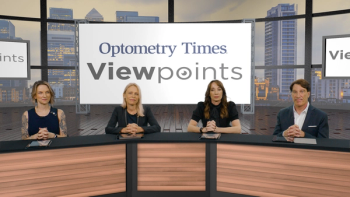
- August digital edition 2022
- Volume 14
- Issue 8
Making the case for greater health care literacy
Glaucoma search study finds online medical resources lack readability.
Have you ever heard of the Simple Measure of Gobbledygook Index (SMOG)? Whether or not you have, let’s discuss it.
A study entitled “Assessment of the Readability and Quality of Online Patient Education Materials for the Medical Treatment of Open-Angle Glaucoma” was recently published in BMJ Open Ophthalmology.1 As its title implies, its aim was to determine how readable—and understandable—online literature is for patients trying to use it.
Have you ever politely asked a patient not to Google his or her disease too much? I have. It’s been a rare occurrence; the only instances I can recall are of a patient who wanted to switch from latanoprost to apple cider vinegar as her glaucoma therapy and of another who read online that I was not qualified to treat eye diseases.
The truth is that not everyone is able to differentiate between useful information and information that is not merely useless, but also can be detrimental to one’s health.
Of course, the public has access to peer-reviewed literature—which is housed by such entities as the National Institute of Health—but most people don’t have the level of literacy required to meaningfully digest much of that content. Obviously, there is room for improvement here.
Back to the aforementioned study.
The study
As you may have guessed, the study involved a Google search. Those of you who, like me, read a lot of studies (whether of your own volition or because you must) will likely scoff at such a methodology.
However, this is an appropriate method to see what our patients are exposed to online.
The investigators analyzed 3 generic glaucoma searches and the top 10 Google search results for the following glaucoma medications: timolol, brimonidine, apraclonidine, dorzolamide, latanoprost, bimatoprost, travoprost, tafluprost and brinzolamide.
All websites containing search results were analyzed for readability using the Flesch Reading Ease Score (FRES), Flesch-Kincaid Grade Level (FKGL), Gunning Fog Index (GFI), and Simple Measure of Gobbledygook Index (SMOG). The websites were also assessed using the benchmarks of accountability set forth by the Journal of the American Medical Association (JAMA).
All in all, 111 articles were analyzed, and the investigators concluded that most of the online glaucoma content included in the study were written at a Grade 6 level that was too difficult for the online consumer.
Perspective
For some perspective, the American Medical Association recommends that patient education material be written at a Grade 6 level or lower.2 That would be approximately age 11 or 12. In Great Britain, Health Education England advises that patient education material be written for an 11-year-old.3
Since the bulk of websites have limited or no quality control standards, JAMA set forth a series of accountability benchmarks—authorship, currency, attributions, and disclosure—to grade information available for public consumption.4
Conclusion
The internet is obviously a great resource when used appropriately. It is also readily apparent that patients who know more about their health conditions and disease states are more likely to take ownership of them, which in turn probably leads to better compliance with medications and other treatments.
This study points out that there is a vital need for greater health care literacy and greater online availability of health care resources that patients can understand. Despite the multitude of inequalities in health care, most patients in the US have some sort of access to the internet. The websites they have access to need to be written at the appropriate age level.
References
1. Crabtree L, Lee E. Assessment of the readability and quality of online patient education materials for the medical treatment of open-angle glaucoma. BMJ Open Ophthalmol. 2022;7(1): e000966. doi: 10.1136/bmjophth-2021-000966
2. Weiss BD. Health literacy and patient safety: Help patients understand. 2nd ed. AMA Foundation; 2007.
3. Health Education England. Health literacy ‘how to’ guide. Accessed June 17, 2022. https://library.nhs.uk/wp-content/uploads/sites/4/2020/08/Health-literacy-how-to-guide.pdf
4. Silberg WM, Lundberg GD, Musacchio RA. Assessing, controlling, and assuring the quality of medical information on the Internet: caveant lector et viewor—let the reader and viewer beware. JAMA. 1997;277:1244-1245. doi:10.1001/jama.1997.03540390074039
Articles in this issue
over 3 years ago
Comanaging tears in Descemet membrane during cataract surgeryover 3 years ago
Dry eye and flares: make education a priorityover 3 years ago
It’s not your grandparents’ anti-VEGF therapyover 3 years ago
Case study: Patient presents with severe PDR historyNewsletter
Want more insights like this? Subscribe to Optometry Times and get clinical pearls and practice tips delivered straight to your inbox.









































.png)


